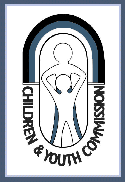
Harmful Substances
Many factors influence development from infancy to adulthood. Natural factors such as genes are predetermined, but many environmental factors such as nutrition can be controlled. Among these factors are harmful substances to which children may be exposed. The Santa Cruz County Children and Youth Commission believes that all children should grow up without the negative influence of narcotics, alcohol, tobacco, and other harmful substances. The Commission supports local, state, and federal efforts to address abuses through the following four approaches :
1. Prevention: The best way to take care of a problem is to stop it from ever happening. Youth are vulnerable to the systematic promotion of harmful substances. The Commission supports the development of positive alternatives for youth exposed to various dangerous substances and encourages educational campaigns to highlight the negative effects of harmful substances.
2. Enforcement: It is difficult to enforce laws when the crime seems "victimless." However, every child who uses harmful substances is a victim. Bodies can be ruined by tobacco, alcohol and mind altering substances. This Commission encourages local law enforcement to give priority to high risk situations where youth could be exposed to these substances, to identify youth suspected to be using harmful substances, and to investigate aggressively any person or business suspected of making these substances available to minors.
3. Treatment: Minors with substance abuse problems need care and support to recover. Substance abuse treatment is a costly and time-consuming process that requires the support of many organizations. The Commission appreciates their efforts, and recommends that funding local, accessible substance abuse treatment remain a high priority.
4. Coordination: Coordination and collaboration of organizations working with youth substance abuse issues are vital for prevention, enforcement, and treatment. The Commission recommends a formal communications process to help those in need and to maintain a unified message about the risks of drugs, alcohol, tobacco, and other harmful substances.
adopted December, 1999
[Previous] [Next] [Position Statements Home] [Print All]